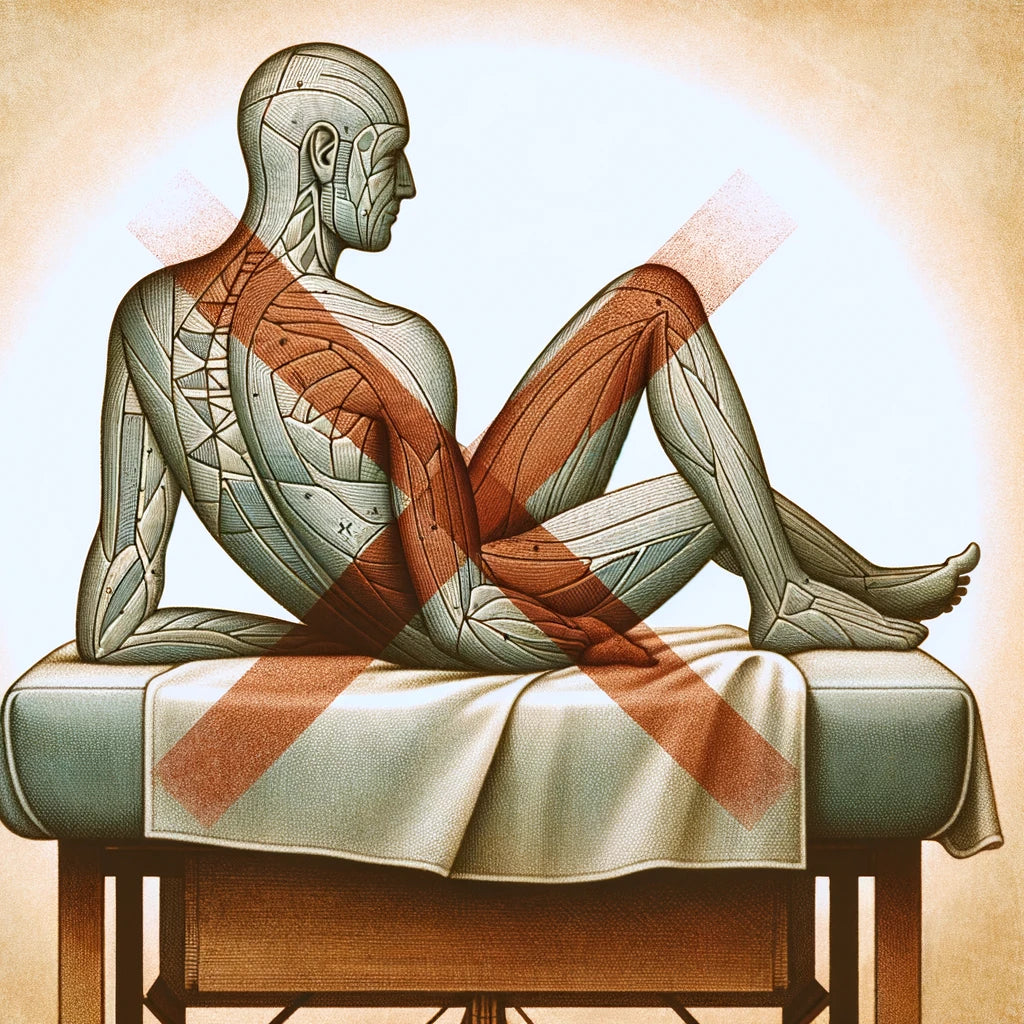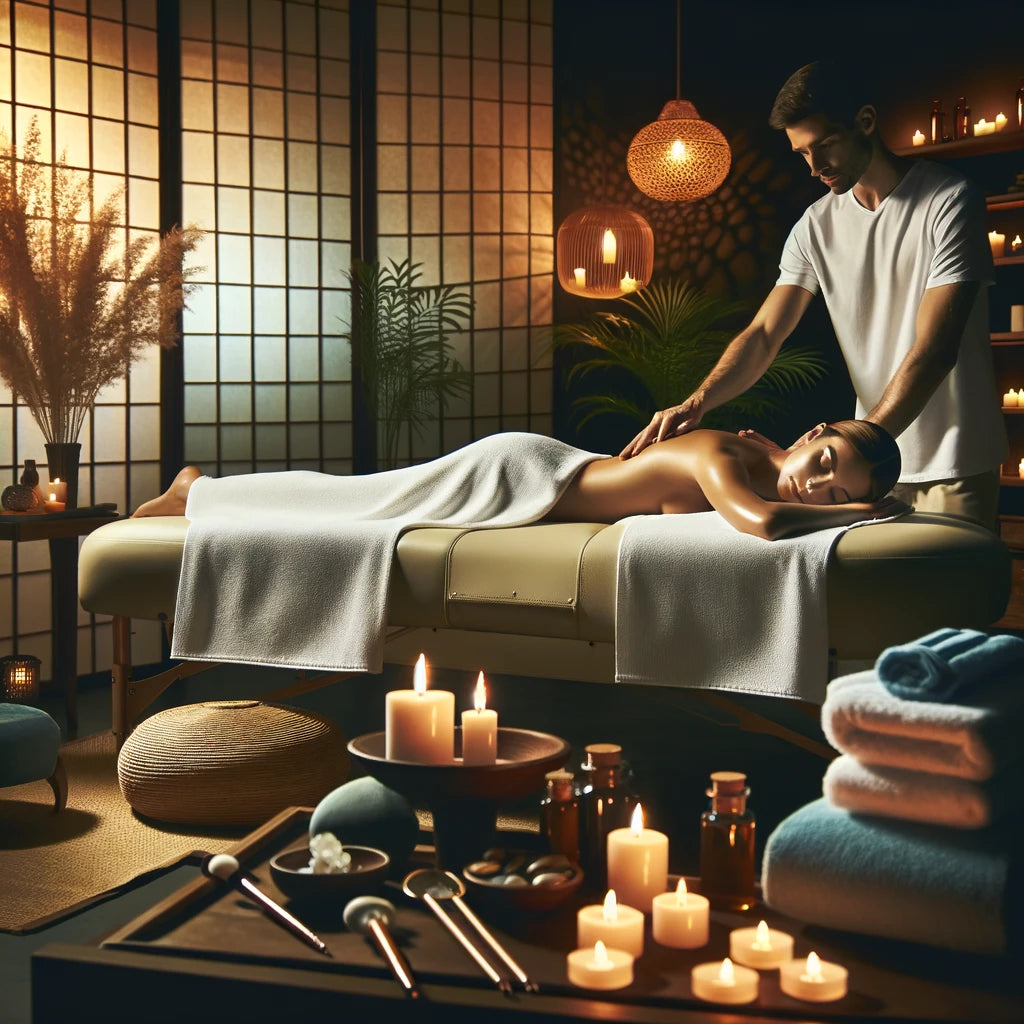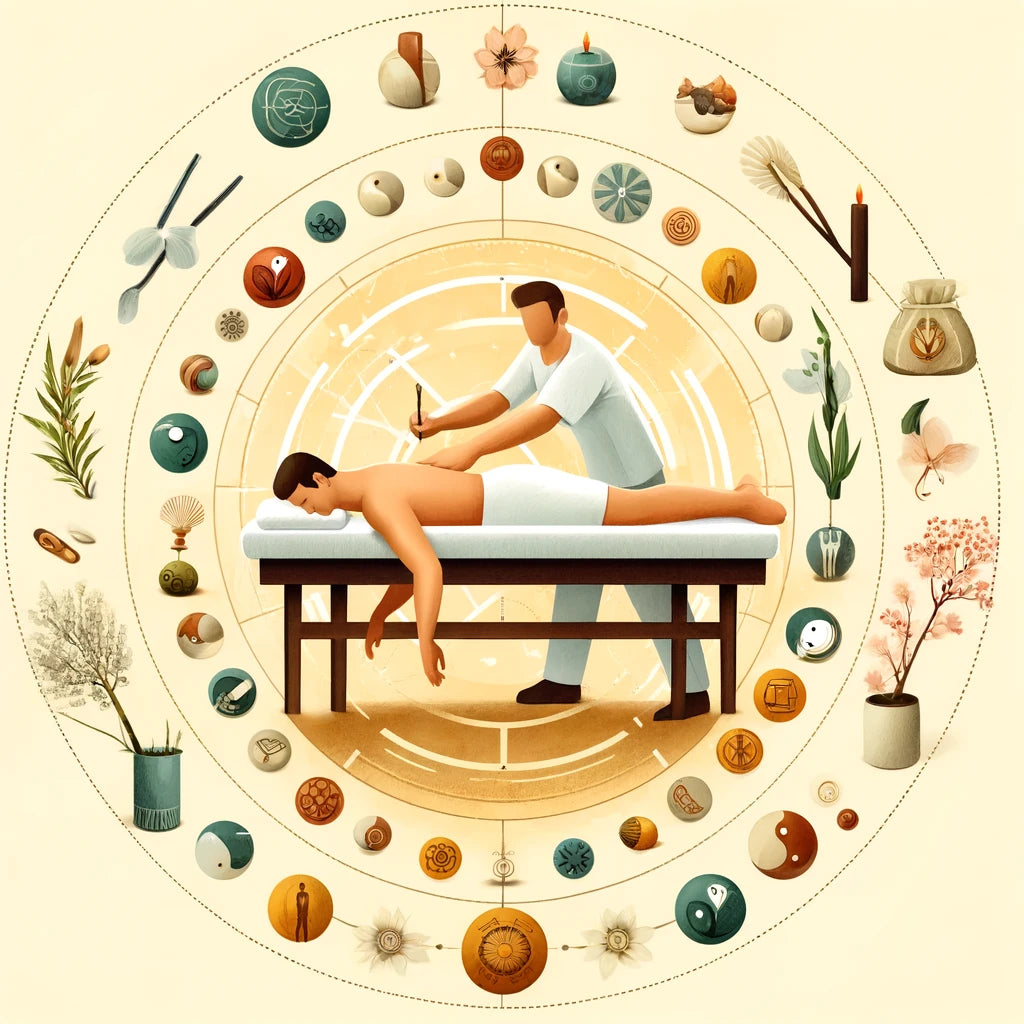
What is not massaged during a full body massage?
Have you ever wondered what exactly is massaged during a full body massage—and perhaps more importantly—what isn't? Most of us think of a full body massage as pure relaxation and the pampering of every muscle in the body. But there are actually some areas that are deliberately left out. In this article, we'll delve deeper into this topic to clear up misconceptions and provide you with a better understanding of this popular wellness therapy approach.
Summary of the article
A full-body massage typically covers most of the body, but certain areas such as the face, genitals, breasts (in women), and areas of injury or pain are avoided. This practice is for the sake of comfort, safety, and ethical guidelines of massage.
What is not massaged during a full body massage?
1. Genital area
Why the genital area is excluded
One of the most fundamental principles of a professional full-body massage is the exclusion of the genital area. This exclusion is both a matter of comfort and ethics. A professional massage therapist will never touch this area to ensure the massage remains purely therapeutic and avoid any misunderstandings.
Security and Ethics Guidelines
Massage practitioners follow strict safety and ethical guidelines that prohibit any touching of the genital area. This serves not only to protect the client but also to protect the massage therapist from potential legal and moral consequences.
2. Breasts (in women)
Medical and ethical considerations
Women's breasts are usually left out of a full-body massage. This is done for several reasons. Firstly, many cultures and societies are sensitive about touching the breasts. Secondly, touching the breasts can pose medical risks.
Exceptional cases and special massages
However, there are specialized massages, such as breast massage for women, that can be performed by trained professionals. These specialized massages have specific health benefits and should only be performed under specific circumstances and with the explicit consent of the client.
3. Face
Focused facial massages
The face is usually left out of a typical full-body massage because it requires specialized massage techniques. Instead, there are focused facial massages that focus exclusively on this area and use techniques suitable for sensitive facial skin.
Skin texture and comfort
Facial skin is more sensitive and has a different texture than the rest of the body. Using the wrong technique could do more harm than good. Therefore, it's wise to exclude the face and, if necessary, choose a specialized facial treatment.
4. Injured or painful areas
Be careful of injuries
If there are existing injuries or pains in certain areas of the body, a professional massage therapist will avoid those areas or treat them very carefully. This is to prevent further damage and not disrupt the healing process.
Individual customization
A good massage therapist will always adapt the massage to the individual needs of the client. This means that injuries and painful areas are respected and treated or omitted accordingly.
5. Extremely sensitive areas
Hypersensitive skin and personal preferences
Some people have extremely sensitive skin or personal preferences regarding certain areas of the body. These areas are usually omitted after consultation with the client to ensure an optimal and comfortable massage experience.
Communication is key
Open communication between massage therapist and client is essential. This is the only way to ensure that all needs and preferences are taken into account and the massage becomes a relaxing experience.
Which areas of the body are treated particularly intensively during a full body massage?
A full-body massage promises relaxation and relief from tension by treating the entire body. But which areas of the body are particularly targeted? This question is of interest to many massage enthusiasts, as it offers deeper insight into the practices and techniques of massage. In this article, we will take a detailed look at the key areas that are intensively treated during a full-body massage and explore the underlying scientific findings.
The back – the center of relaxation
The importance of the back in massage
The back is often the centerpiece of any full-body massage. This is because it houses many large muscle groups that are often tense due to poor posture, stress, or physical exertion. Scientific studies have shown that back massage improves circulation and relaxes muscles, which can lead to a reduction in pain and stress.
Techniques for back massage
Back massages utilize various techniques, including kneading, stroking, and pressing. These techniques aim to release deeper muscle tension and improve flexibility. The use of devices such as the NAIPO massage chair can provide additional support, as these devices are specifically designed to effectively massage the back area.
Neck and shoulders – focal points of tension
Why the neck and shoulders are important
The neck and shoulders are other areas that receive intensive treatment during a full-body massage. These regions are prone to tension due to prolonged sitting, poor posture, and stress. A targeted massage can help relieve headaches and improve mobility.
Scientific findings on neck and shoulder massage
Studies have shown that regular massages in these areas can increase the production of endorphins, leading to natural pain relief. The NAIPO massage chair is an excellent example of a device specifically designed to massage the neck and shoulder area and thus specifically relieve tension.
Arms and hands – often neglected areas
The importance of massage of arms and hands
Although often overlooked, the arms and hands are essential areas to consider during a full-body massage. These areas are often tense, especially in people who spend a lot of time working on computers or performing physical labor.
Benefits of arm and hand massage
Massaging these areas can promote circulation and relieve pain. It can also improve joint flexibility and mobility. The NAIPO massage chair offers special settings that also effectively massage the arms and hands, contributing to holistic relaxation.
Legs and feet – supports of the body
Why legs and feet should be massaged
Legs and feet bear the weight of the entire body and are therefore particularly prone to tension and pain. A massage of these areas can help loosen the muscles and improve circulation.
Scientific background to leg and foot massage
Studies show that regular massage of the legs and feet can significantly improve circulation and reduce swelling. The NAIPO massage chair features special functions that intensively massage these areas, thus contributing to comprehensive relaxation.
Conclusion
A full-body massage is a wonderful way to relax and loosen muscles. However, there are important areas that are intentionally excluded to ensure the client's comfort and safety. These include the genital area, the breasts in women, the face, injured or sore areas, and extremely sensitive areas of the body. It's important to understand these exclusions in order to have realistic expectations and fully enjoy the massage.
Frequently Asked Questions (FAQs)
1. Is the back always massaged during a full body massage?
Yes, the back is one of the main focus points in a full body massage and is usually treated thoroughly.
2. Can I exclude certain areas?
Yes, you can exclude certain areas at any time
Open communication with your masseur is crucial here.
3. Why is the face not massaged during a full body massage?
The face requires special techniques and is more sensitive, so it's usually not included in full-body massages. However, there are specialized facial massages.
4. Is it normal to feel uncomfortable when certain areas are massaged?
Yes, it's completely normal. You should always feel comfortable, and you can always let the masseur know if you don't want certain areas massaged.
5. Can I get a full body massage while pregnant?
Yes, but it is important to choose a massage therapist who specializes in prenatal massage, as special techniques and precautions are required.







Leave a comment
This site is protected by hCaptcha and the hCaptcha Privacy Policy and Terms of Service apply.